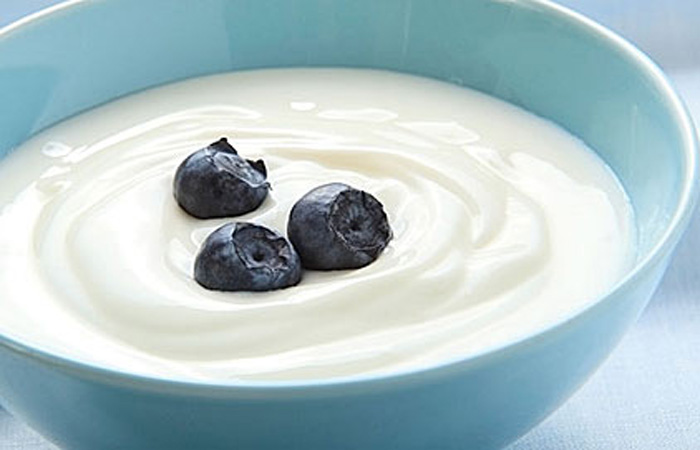Modified starches in Dairy products
3/4/2019

Modified starches in Dairy products
Modified starches consist of starch with low to very low level of substituent group. Enzymatic modification of starch is hydrolysis of some part of starch into a low molecular weight of starch called maltodextrin, or dextrin using amylolytic enzymes . They are widely used for food and pharmaceutical industries.
Physical modification involves pre-gelatinization, and heat-treatment of starch, etc. Pre-gelatinized starches are pre-cooked starches that can be used as thickener in cold water. While the heat-treatment processes include heat–moisture and annealing treatments, both of which cause a physical modification of starch without any gelatinization, damage to granular integrity, or loss of birefringence.
Chemical modification is the mainstream of the modified starch in the last century. Many developments of chemical modification of starches have been introduced in food, pharmaceutical and textile industries. shows the classification of modified starches available currently.
In order to investigate the uses of modified starches in selected food products, the findings has been divided in sub-groups according to their functional applications. Examples of the applications in selected food products will also be included as follows:
1.1 As Fat Replacer/Fat Mimetic
As a food component, fat contributes to the flavor, appearance, texture, and shelf life of food products. Consumers nowadays are really concerns about the adverse health effect of overconsumption of certain types of lipids, this has resulted in some development of reduced-fat food to solve the issue. It is difficult to imitate traditional product quality when preparing reduced-fat foods. A combination of nonfat ingredients with different functional roles can be used to replace the quality attributes lost when fat is removed.
Starch also can be modified by hydrolysis to form a fat replacer. Some well-known fat replacer from starch base is maltodextrin beside some other starch hydrolysis products. It is widely used for low-fat butter spread/margarine, low fat mayonnaise, low fat milk type products and low -fat ice cream.
1.1.1 Low-fat yogurt
Some recent studies have been done in replacing fat with modified starch. prepared three commercial fat replacers consisting of whey protein concentrate (WPC), microparticulated whey protein (MWP) and modified tapioca starch (MTS), along with the preparation of seven reduced-fat yogurts from reconstituted milk. They found that yogurts with WPC and blends of WPC and MWP possessed textural characteristics that resemble thos of full-fat yogurt (FFY), whereas yogurt with MWP showed lower tension and firmness but higher cohesiveness. Yogurt with MTS showed higher firmness than FFY. Blends of carbohydrate–protein-based fat replacer resulted in yogurts that are less dense, firm and adhesive, but more cohesive than FFY.
Alting,found a way to improve low-fat yogurt creaminess by using amylomaltase-treated starch (ATS) domain. They realized that ATS is a creaminess enhancer that is four times as effective as maltdextrin, which is currently used widely in set style yogurt as fat replacer. The creaminess perception of low-fat yoghurt (1.5%) can be raised to that of full-fat yoghurt (5%) with the presence of small amount of ATS. In the energy’s consumption point of view, reduction in fat-related energy value could be achieved from 45 to 21.5 kcal/100 g product. The ATS domains are enclosed in or bound to the protein network which is the dominant microstructure of the yoghurt. The perceived creaminess resulted from melting of these ATS domains in the mouth is due to a combined effect of their physical melting and hydrolysis by amylase present in the saliva. In this way, the ATS domains resemble the microstructural behaviour of fat particles.
1.1.2 Low-fat cheese
Functionality of modified tapioca starch and lecithin as fat mimetic in Feta cheese was studied by Sipahioglu, Avarez & Soleno-Lopez. Cheeses were made without any fat mimetic, 1% modified tapioca starch, 0.2% lecithin, and a combination of 0.5% tapioca starch and 0.1% lecithin. Low-fat Feta cheeses (9–16% fat) were prepared from bovine 1.6–2.2% fat milk and were ripened for 45 days before analysis. Result shows that levels of fat and fat mimetic significantly affected moisture, protein, yield, and hardness of cheese. Reduced-fat cheeses
with modified tapioca starch had the highest moisture (67.6%) and lowest protein (13.5%) content and their hardness was higher. SEM micrographs revealed that the size of protein aggregates increased as the fat content of the cheese decreased. The combination of modified tapioca starch and lecithin improved flavor, texture and overall acceptability of reduced-fat and low-fat Feta cheeses.
In addition, Koca and Metin studied the textural, melting and sensory properties of semi-hard Turkish traditional cheese, known as Kashar cheese which was produced by one of carbohydrate-based fat replacer namely, 5.0% w/w with another two protein-base fat replacer (1.0% w/w Simplesse®D-100 and 1.0% w/w Dairy-Lo™). The result was being compared with the control samples of low-fat cheese without fat replacer and the full-fat cheese. The changes in cheese characteristics were examined during storage for 90 days.
It was found that deterioration of hardness, springiness, gumminess and chewiness occurred due to the usage of fat replacers while cheese cohesiveness was increased. The use of carbohydrate-base fat replacer, had slightly increased the cheese meltability. These results indicated that Simplesse D-100 and RaftilineHP can improve the texture and sensory.
By
Pars Anzim Dayan technical support sector